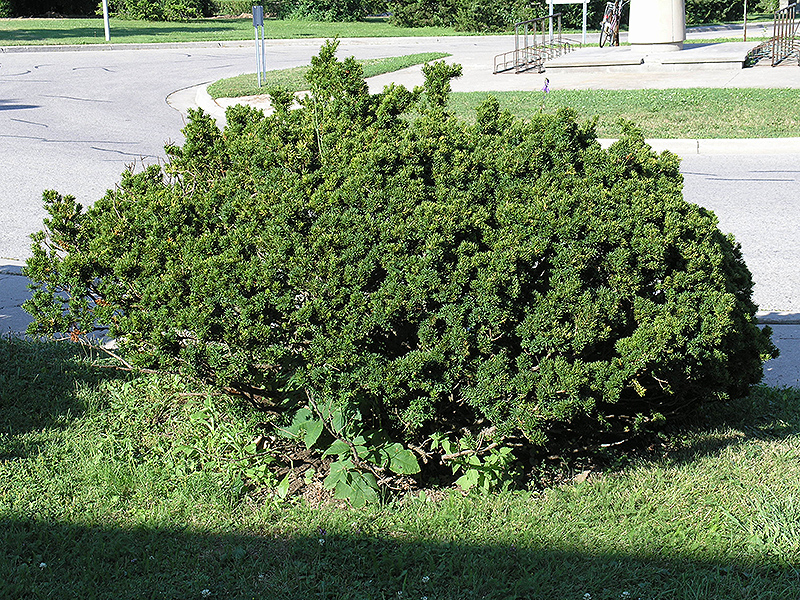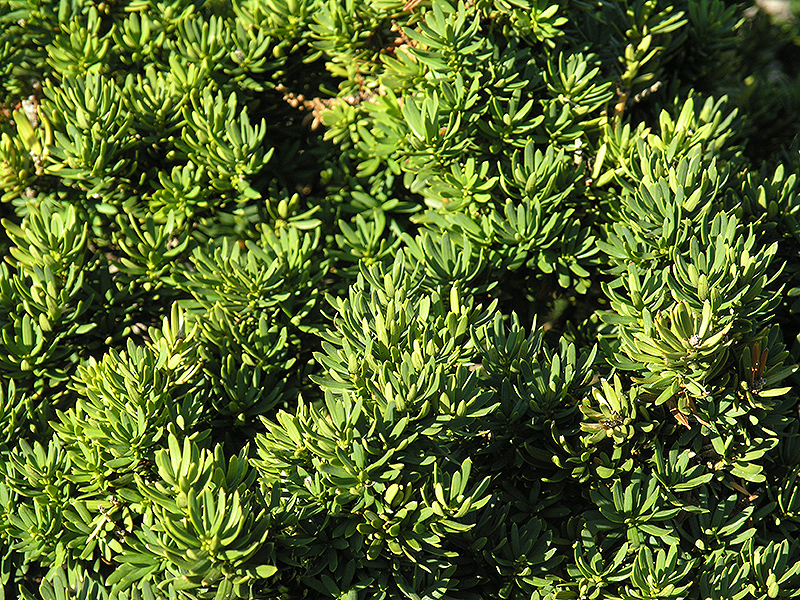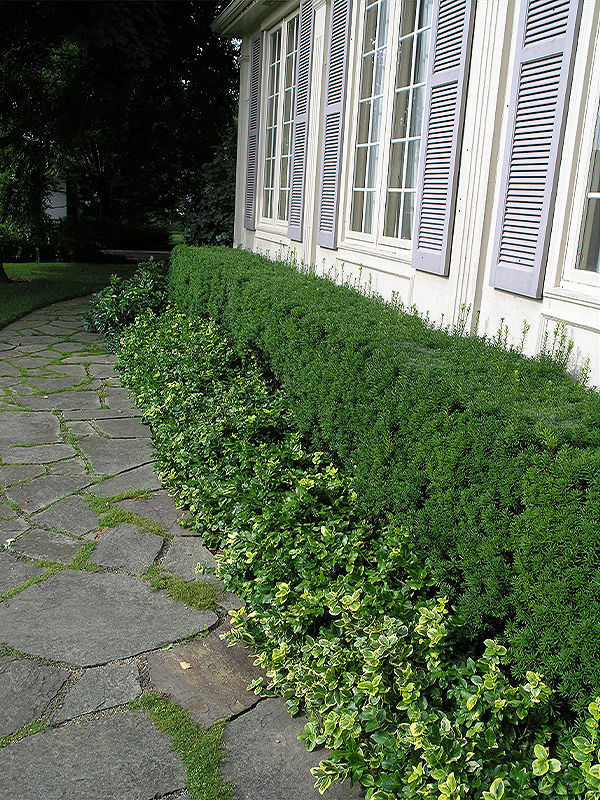| General Description | A very long lived garden species with a very vigorous root system which helps maintain the plants longevity once it is established. This yew is still heavily used in landscape design and foundation planting for its toughness and hardiness. |
| ID Characteristic | It is difficult to identify the cultivar if the specimen has been drastically pruned. A wide pyramidal habit, with distinct leaders on each branch and has been described as a small tree to large shrub due to its potential size. |
| Shape | Slightly loose rounded form. |
| Landscape | Appropriate use for uniform shaped hedges, background, against a building to hide the foundation, in mass plantings, as a screen from wind or noise as well as for topiary use. |
| Propagation | Propagated from terminal branch cuttings, container or field grown for many years until a suitable size. Spring or autumn planting is suggested for best root establishment. |
| Cultivation | Moist and well draining slightly acidic to neutral loam soils. Prefers full sun but tolerates partial shade. |
| Pests | Possible pests are black vine weevils, mealy bugs, mites and scale. Potential diseases that may occur are needle blight, dieback and root rot. |
| Notable Specimens | The Gardens of Fanshawe College, London, Ontario, Canada. |
| Habitat | Horticultural origin. |
| Bark/Stem Description | Slightly smooth bark that runs in a curvy longitudinal manner with the length of the specimen, displaying small notches and grooves where pre-existing small branches were once attached. |
| Leaf Description | Very short needles for this cultivar, lustrous dark green and slightly duller on the underside. Juvenile growth is very distinct as its colour is a very light bright green.
|
| Flower Description | Dioecious plant that needs both sexes present to develop, seed. Flowers in late March and early April. |
| Fruit Description | Red arials covering a hard green seed centre that is generally 5-8 mm in diameter. |
| Colour Description | Bright green lustrous top leaf colour and slightly duller on the underside. |
| Texture Description | Rigid and strong standing large shrub or small tree. |


